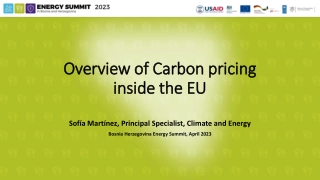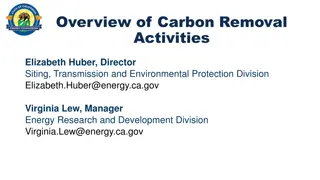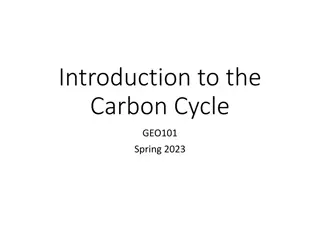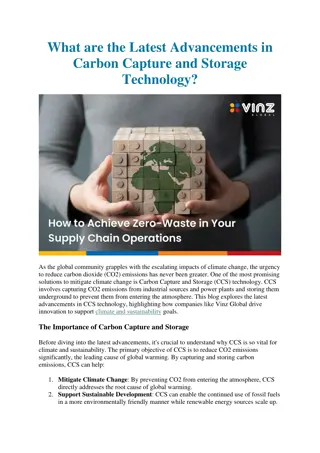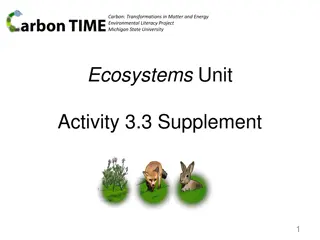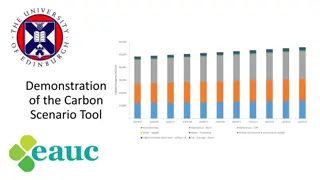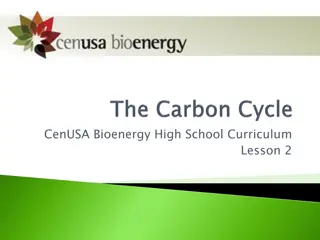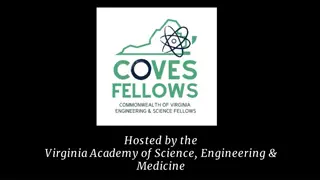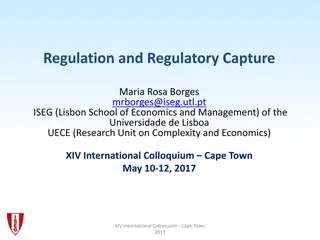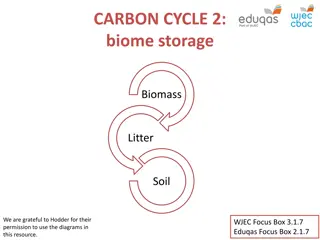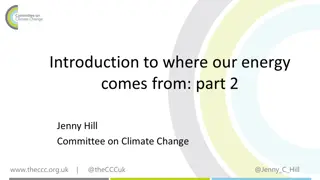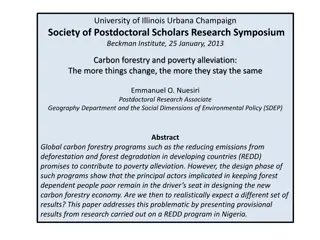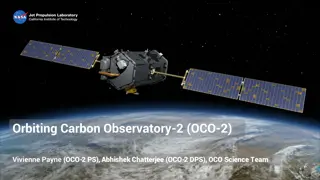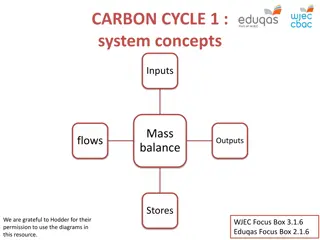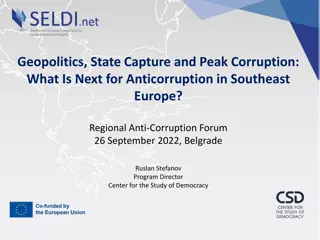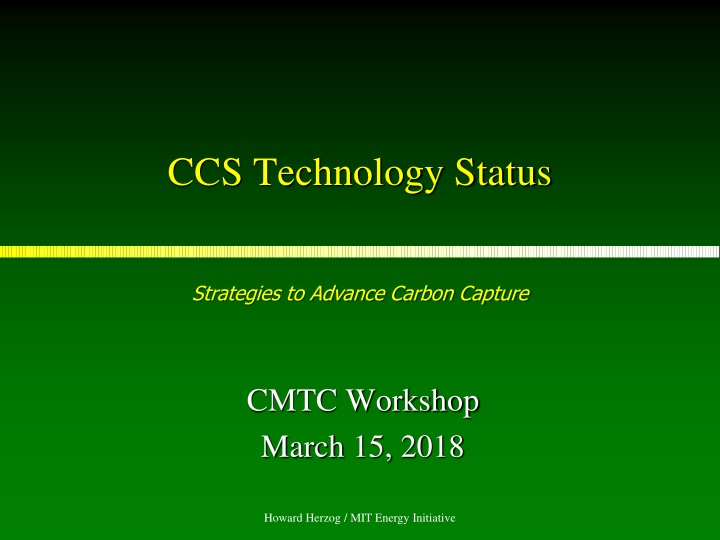
Strategies to Advance Carbon Capture Technology
Understanding the current status, challenges, and future pathways of carbon capture technology as discussed by Howard Herzog from MIT Energy Initiative. Highlights include CO2 source classification, capture technologies like amines, research focus on energy reduction, market challenges, and new process pathways like gasification.
Download Presentation

Please find below an Image/Link to download the presentation.
The content on the website is provided AS IS for your information and personal use only. It may not be sold, licensed, or shared on other websites without obtaining consent from the author. If you encounter any issues during the download, it is possible that the publisher has removed the file from their server.
You are allowed to download the files provided on this website for personal or commercial use, subject to the condition that they are used lawfully. All files are the property of their respective owners.
The content on the website is provided AS IS for your information and personal use only. It may not be sold, licensed, or shared on other websites without obtaining consent from the author.
E N D
Presentation Transcript
CCS Technology Status Strategies to Advance Carbon Capture CMTC Workshop March 15, 2018 Howard Herzog / MIT Energy Initiative
Classifying CO2 Sources Category % CO2 (vol) Example Gas Wells (e.g., Sleipner) Synthesis Gas (e.g., IGCC) High Pressure varies Ethanol Plants Oxy-Combustion Exhaust High Purity 90-100% Coal-Fired Power Plants Cement Plants Cracker Exhaust Dilute 10-20% Natural Gas Boilers Gas Turbines Very Dilute 3-7% Ambient Air Submarines/ Space Craft Extremely Dilute 0.04 1% Howard Herzog / MIT Energy Initiative
Capture Technology Howard Herzog / MIT Energy Initiative
Pros/Cons for Amines Pros Commercially proven Closing gap with minimum work Scales well Cons Temperamental about impurities Requires steam (not plug and play) Limits flexibility Howard Herzog / MIT Energy Initiative
Reseach Focus Main focus to date has been to reduce the energy penalty The following are becoming increasingly important: Flexibility Storage Low capital costs Howard Herzog / MIT Energy Initiative
Market Challenges Power Lowering capacity factors for base load disadvantages high capital cost systems Premium for flexibility Load following Turndown Storage Industrial Lack of steam Howard Herzog / MIT Energy Initiative
New Capture Process Pathways Post-combustion Capture Adsorption Membranes Cryogenics Fuel Cells New Power Cycles Gasification with pre-combustion Oxy-combustion Chemical looping Howard Herzog / MIT Energy Initiative
Gasification At one point, anointed the future of clean coal and CCS High efficiencies Criteria pollutant clean-up CCS Issues Availability High capital costs Biomass Integrated Gasification (BIG) Still prominent in literature Tougher than IGCC with coal Feeding biomass Moisture Howard Herzog / MIT Energy Initiative
Allam Cycle Net Power, CB&I, Exelon, Toshiba 50 MWth prototype under construction near Houston Broke ground March 9th, 2016 Turbine inlet: 300 bar, Turbine outlet: 30 bar, ~97% recycle Howard Herzog / MIT Energy Initiative
Cryogenic Carbon Capture Post-combustion SES Innovation Prof. Larry Baxter Brigham Young Univ. Demonstrated at 1 tpd at coal plants Features No steam required (plug and play) Multipollutant capture Energy storage Howard Herzog / MIT Energy Initiative
Geologic Storage Howard Herzog / MIT Energy Initiative
Geologic Storage Status Commercial Analogues Enhanced Oil Recovery (EOR) since 1972 Acid Gas Injection since 1989 Natural Gas Storage since 1915 Commercial Operations: 6 projects at megaton/yr scale Subsurface Uncertainty Capacity Long-term Integrity Induced Siesmicity Other Issues Regulatory Framework Long-term Liability Public Acceptance Passive vs. Engineered Systems Howard Herzog / MIT Energy Initiative
Utilization Howard Herzog / MIT Energy Initiative
Utilization Market Size Life-Cycle Energy Use Permanence Comments Stepping Stone EOR 0 + 0 Theory: + Reality: - Opportunities in Cement Mineralization + + Niche Chemicals, etc. - - - Applications Fuels + - - Costly Howard Herzog / MIT Energy Initiative
Negative Emissions Howard Herzog / MIT Energy Initiative
CO2 Removal Options BECCS: Bioenergy with carbon capture and storage DAC: Direct air capture of CO2 from ambient air by engineered chemical reactions EW: Enhanced weathering of minerals, where natural weathering to remove CO2 from the atmosphere is accelerated and the products stored in soils, or buried in land or deep ocean AR: Afforestation and reforestation to fix atmospheric carbon in biomass and soils Ocean: Manipulation of carbon uptake by the ocean, either biologically (that is, by fertilizing nutrient-limited areas) or chemically (that is, by enhancing alkalinity) Agriculture: Altered agricultural practices, such as increased carbon storage in soils Biochar: Converting biomass to recalcitrant biochar, for use as a soil amendment. From Smith, et al., Biophysical and economic limits to negative CO2 emissions , Nature Climate Change, 6, January (2016). Howard Herzog / MIT Energy Initiative
Negative Emissions BECCS Require carbon prices ~$100/tCO2 Avoids paying the carbon price Receives carbon credits for negative emissions Major barrier finding carbon neutral biomass DAC Require carbon prices ~$1000/tCO2 or carbon- free power that is too cheap to meter Howard Herzog / MIT Energy Initiative
Role of Negative Emissions Lower atmospheric CO2 levels Purpose: Meet an [arbitrary] stabilization target Scale: 10s Gt CO2/yr Cost: > > today s mitigation costs Offsets Purpose: Offset emissions that are very expensive to mitigate Scale: Gts CO2/yr Cost: < marginal mitigation cost at any time Howard Herzog / MIT Energy Initiative
Scenarios Howard Herzog / MIT Energy Initiative
Global Results to 2100 Cheap CCS Base Cheap Nuclear Cheaper Renewables 20
Major Regional Results to 2100 USA EUR China India 21
Closing Thoughts Carbon Dioxide Capture and Storage (CCS) is technically viable today and has significant scope for improvement. While there is room to improve costs, it will always be cheaper to emit CO2 to atmosphere than capture. Therefore, policy is required to make CCS economically viable. A low carbon energy system will have significant differences from today s energy systems. We need to develop innovative CCS technology that fits with tomorrow s systems. Utilization and negative emissions are hot topics in CCS today. We may need to pump the brakes a bit. Howard Herzog / MIT Energy Initiative
Contact Information Howard Herzog Senior Research Engineer Massachusetts Institute of Technology (MIT) Energy Initiative Room E19-370L Cambridge, MA 02139 Phone: 617-253-0688 E-mail: hjherzog@mit.edu Web Site: sequestration.mit.edu Howard Herzog / MIT Energy Initiative


